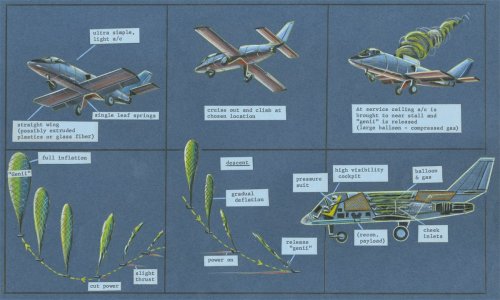Spook
ACCESS: Confidential
- Joined
- 6 July 2012
- Messages
- 148
- Reaction score
- 63
From CodeOne Magazine:
"Alladin's Lamp(??) was a Convair conceptual design for small jet/balloon combination to be used for reconnaissance missions. Drawing, by Charlie Donovan, dated December 1963."
Any more information about the project, was it part of any competition/requirement?. Although the picture represents it seems that it suppose to fly to a certain altitude and then cut the power release the chute called as "genil" , and then do the clock-wise work after doing the mission ;D , was there anything else that it is not mentioned, perhaps?! :
Regards,
~Ak
"Alladin's Lamp(??) was a Convair conceptual design for small jet/balloon combination to be used for reconnaissance missions. Drawing, by Charlie Donovan, dated December 1963."
Any more information about the project, was it part of any competition/requirement?. Although the picture represents it seems that it suppose to fly to a certain altitude and then cut the power release the chute called as "genil" , and then do the clock-wise work after doing the mission ;D , was there anything else that it is not mentioned, perhaps?! :
Regards,
~Ak

